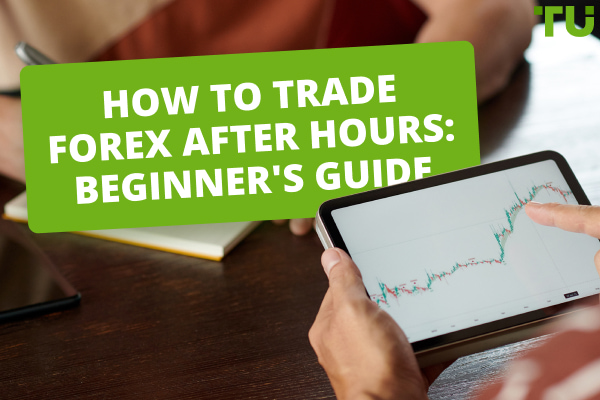Top 7 swing trading indicators you should know
Top Swing Trading Indicators to Learn:
Volume — measured by the number of times an asset has been traded in a given period;
Moving average (MA) — used to identify the support and resistance levels as well as the overall market directions;
Relative strength index (RSI) — a momentum oscillator that measures the relative speed and strength of the price movement;
MACD — derives signals from the relationship between two moving averages of an asset’s price;
Bollinger Bands — a standard deviation-based technical indicator that generates trade signals.
Swing trading indicators primarily act as confirmation tools for the overall trade setup. The choice of indicators used for a trading strategy can make or break your trading game. This is why the decision of which indicators to rely on is crucial. In this review, the experts at TU discuss the key things to consider when selecting a technical indicator, seven of the best swing trading indicators, how to use those indicators, how to combine several indicators, and a lot more.
How to choose indicators for swing trading
There are dozens of technical indicators to choose from and none of them is a panacea for all trading conditions. The choice of indicators to be used depends highly on the trader’s strategy and style. According to experts, the following are the key things to consider when choosing indicators for your trading strategy:
1. The optimal number of indicators
Just as too many cooks spoil the broth, too many indicators spoil the trade signal. For every strategy, there is a sweet spot for the number and type of technical indicators to be used. As a general rule of thumb, experts suggest using anywhere between 1-4 technical indicators when looking for a trade signal. Any number beyond that can lead to confusing signals.
2. Time horizon
Some indicators are more suitable for shorter time horizons while others function better for medium-term horizons. It is essential to identify those indicators that fit best into your trade horizon. This can effectively improve the overall conviction of a trader.
3. Complexity
Indicators are based on some permutation and combination of mathematical equations using price and volume data. They can get as easy as a simple moving average and as complex as compound mathematical formulae. It depends upon the trader to decide the level of complexity with which he is comfortable because the essence of using an indicator lies in understanding the logic behind the signals generated by it.
Top 7 technical analysis indicators for swing trading
The following are the 7 best technical indicators for swing trading based on the opinions of various experts:
1. Volume
Volume is measured by the number of times an asset has been traded in a given period. It primarily acts as a confirmation tool for price action break-outs.
Type of signal: Co-incident; confirmatory
Basic setup: A higher volume represents the greater strength of the direction of the market in which an asset is being tracked. So if a break-out occurs with high volume, the asset is expected to sustain it and move higher. In the same way, if a breakdown occurs with high volume, the asset is expected to move lower.
Example: We can see in the following graph for $TSLA that when the price moves towards the resistance zone, the volumes start to increase. The principle for this indicator suggests that when the price level breaches the resistance with high volumes, the rally should continue, which is confirmed by the graph. After breaching the resistance level, the stock performed a swing movement of nearly 40%.

Volume Indicator
2. Moving average (MA)
The moving average indicator smooths the price data by formulating a constantly updated trend line based on historical prices. It is used to identify the support and resistance levels as well as the overall market directions.
Type of signal: Lagging; Entry/exit
Basic setup: The most commonly used MA strategy involves using two moving averages: a shorter period MA (generally 5 days) and a longer period MA (generally 25 days). A buy signal is generated when the shorter period MA cuts the longer period MA from below with a sell signal if it cuts downward.
Example: The following graph for $TSLA shows the shorter period MA (blue line) crossing below the longer period MA (yellow line) at point 1, at which time the stock moves lower. This confirms the sell signal. Likewise, when the shorter period MA (blue line) crosses above the longer period MA (yellow line) at point 2, the stock moves higher. This confirms the buy signal.

Moving Average
3. Relative strength index (RSI)
RSI is a momentum oscillator that measures the relative speed and strength of the price movement compared to an asset’s past performance. It oscillates between 0 and 100.
Type of signal: Lagging; Strength
Basic setup: The key trigger points for RSI are the levels of 70 and 30. If the RSI line crosses above 70, it is assumed that the price has moved into the ‘overbought’ zone and a sell signal is generated. Likewise, if the RSI line crosses below 30, it is assumed that the price has moved into the ‘oversold’ zone and a buy signal is generated.
Example: We can see in the following graph for $TSLA that every time the RSI line crosses the level of 70, the stock goes through a correction. This confirms the theory that an RSI of more than 70 generates a sell signal.

Relative strength index
4. Moving average convergence divergence (MACD)
MACD is a trend-based momentum indicator that derives signals from the relationship between two moving averages of an asset’s price. The indicator is based on the interaction of two lines (MACD and the signal line) that generate the trade signal and a histogram that shows the strength of the current market trend.
Type of signal: Leading; Strength; Entry/exit
Basic setup: The setup for MACD is simple. If the MACD (blue) line cuts the Signal (red) line from below, a buy signal is generated. Similarly, if the MACD line cuts the Signal line from above, a sell signal is generated. The strength of each signal must be confirmed by the histogram.
Example: The below graph for $TSLA shows that when the MACD line cuts the signal line from above, the stock moves lower. This sell signal is further confirmed by bigger bars in the histogram. Similarly, when the MACD line cuts the signal line from below, the stock moves higher. This buy signal is further confirmed by bigger bars in the histogram.

MACD
5. Bollinger Bands
Bollinger Bands is a standard deviation-based technical indicator that generates trade signals. It plots two standard deviation lines that are above and below a simple moving average of an asset’s price.
Type of signal: Lagging; Entry/exit
Basic setup: The traditional Bollinger Bands setup assumes that the price of an asset cannot consistently stay above or below the two standard deviation levels for a long period. So, if the price crosses the upper band, a sell signal is generated and if the price crosses the lower band, a buy signal is generated. The middle line acts as a dynamic support.
Example: You can see in the following graph for $TSLA that the price consistently moves within the Bollinger Bands. Whenever the price touches the lower band, it bounces right off to move higher, confirming the buy signal. Similarly, whenever the price touches the upper band, it starts retracing, confirming the sell signal.

Bollinger Bands
6. Stochastic Oscillator
The Stochastic Oscillator is a momentum-based indicator that compares the latest closing price of an asset to a range of its closing prices over a specified period. Like RSI, this indicator also identifies whether an asset is overbought or oversold and oscillates between 0 and 100.
Type of signal: Leading; Entry/exit
Basic setup: The key trigger points for the stochastic oscillator are the levels of 80 and 20. If the stochastic readings cross above 80, it is assumed that the price has moved into the ‘overbought’ zone and a sell signal is generated. Likewise, if the stochastic reading cross below 20, it is assumed that the price has moved into the ‘oversold’ zone and a buy signal is generated.
Example: You can see in the following graph for $TSLA that almost every time the stochastic reading crosses above the level of 80, the stock goes through a correction. This confirms the theory that a reading of more than 80 generates a sell signal. Similarly, whenever the stochastic reading crosses below the level of 20, the price moves higher. This confirms the theory that a reading of less than 20 generates a buy signal.

Stochastic Oscillator
7. Fibonacci retracement
The Fibonacci Retracement tool is a popular technical indicator that can be used to identify key support and resistance levels, place stop-loss orders, and decide on the target prices. It is based on Fibonacci’s sequence of numbers introduced by mathematician Leonardo Pisano. This indicator works best when the market is trending.
Type of signal: Leading; Entry/exit
Basic setup: When the market is trending upwards, a buy signal is generated if the price retraces to a Fibonacci support level. Similarly, when the market is trending downwards, a sell signal is generated if the price retraces to a Fibonacci resistance level.
Example: You can see in the following graph for $TSLA that the price is trending upwards and keeps retracing back to various Fibonacci levels. Once it reaches the support levels, it starts moving higher again, confirming the buy signal.

Fibonacci Retracement
How to use the best swing trading indicators
The following image presents an example of how to use the aforementioned swing trading indicators in a real-world scenario. This is a real call generated using signals and confirmations given by the indicators discussed earlier. You can see that MACD is a leading indicator that generated a buy signal before the breakout happened. When the breakout happened, the increasing volume confirmed the strength of the breakout, giving a double confirmation for this trade.
Looking at the Fibonacci retracement levels, the price was near the 0.5 support level during an uptrend, which again generated a buy signal. Experts suggest having at least 3 confirmations before entering into a trade and this condition is also satisfied in this trade setup. Ideally, a trader would’ve entered this trade and booked anywhere between 0 to 40% profits.

How to use swing indicators?
Can I match different indicators for swing trading?
According to experts, traders can and should use confirmations from more than one indicator when employing the swing trading strategy. When traders use more than one technique or tool to confirm the trade signal, they are said to be engaging in confluence trading. Confluence increases the odds of a winning trade and helps filter out fake breakouts (fake-outs).
Best platforms for swing trading

Summary
Swing trading indicators are used to confirm trade signals generated by a trader’s strategy. The choice of indicators to be added to one’s trading strategy is crucial and must be taken only after considering key aspects like trade horizon, complexity, and the optimal number of indicators. According to experts, the top 7 swing trading indicators are volume, RSI, MACD, Bollinger Bands, Stochastic Oscillator, Moving Averages, and Fibonacci retracement levels. Traders should try using more than one indicator to increase the odds of capturing a winning trade. Beginners looking to get into swing trading can consider opening an account with brokers like Oanda (for Forex) and Interactive Brokers (for stocks).
FAQ
What is the time horizon for swing trading?
Swing trades generally last for a few days and no longer than a few weeks or months.
What is riskier: Swing trading, or day trading?
In relative terms, swing trading is less risky compared to day trading because volatility is smoothened out over a longer time horizon under swing trading.
What is the biggest risk in swing trading?
Swing trading positions are highly vulnerable to abrupt market movements. Moreover, holding positions overnight and through weekends is an additional risk that comes with this strategy.
Can I trade using only a single indicator?
Trading based on only a single indicator is possible but not advisable. The more confirmations you have, the better the chances of the trade being successful.
Team that worked on the article
Chinmay Soni is a financial analyst with more than 5 years of experience in working with stocks, Forex, derivatives, and other assets. As a founder of a boutique research firm and an active researcher, he covers various industries and fields, providing insights backed by statistical data. He is also an educator in the field of finance and technology.
As an author for Traders Union, he contributes his deep analytical insights on various topics, taking into account various aspects.
Dr. BJ Johnson is a PhD in English Language and an editor with over 15 years of experience. He earned his degree in English Language in the U.S and the UK. In 2020, Dr. Johnson joined the Traders Union team. Since then, he has created over 100 exclusive articles and edited over 300 articles of other authors.
The topics he covers include trading signals, cryptocurrencies, Forex brokers, stock brokers, expert advisors, binary options. He has also worked on the ratings of brokers and many other materials.
Dr. BJ Johnson’s motto: It always seems impossible until it’s done. You can do it.
Mirjan Hipolito is a journalist and news editor at Traders Union. She is an expert crypto writer with five years of experience in the financial markets. Her specialties are daily market news, price predictions, and Initial Coin Offerings (ICO). Mirjan is a cryptocurrency and stock trader. This deep understanding of the finance sector allows her to create informative and engaging content that helps readers easily navigate the complexities of the crypto world.










